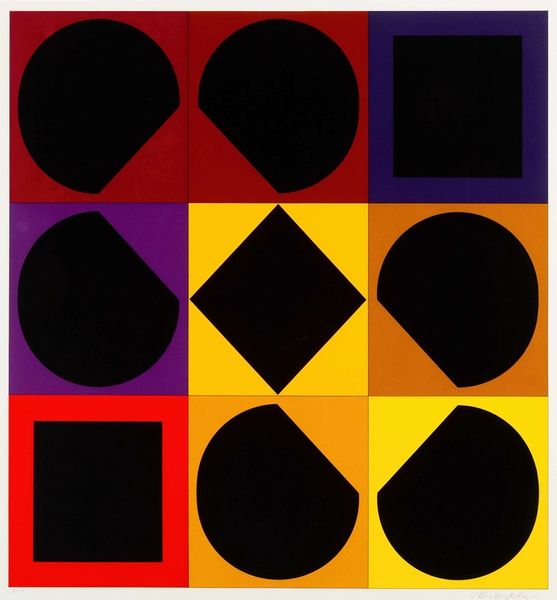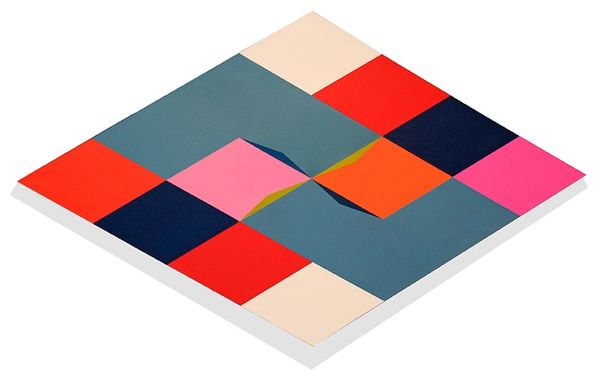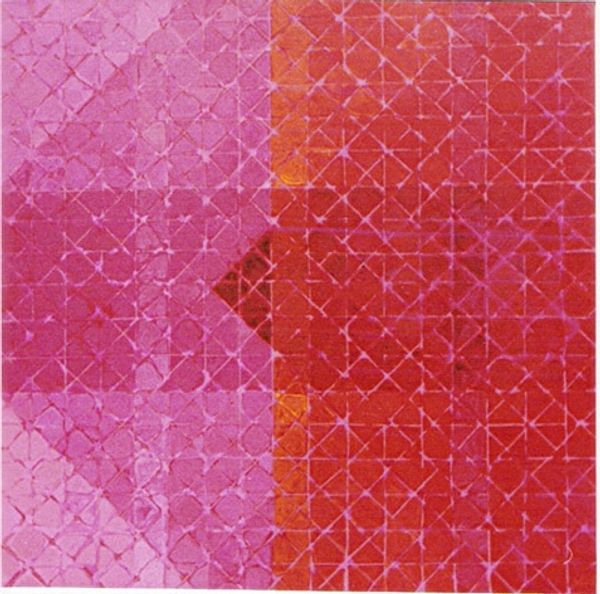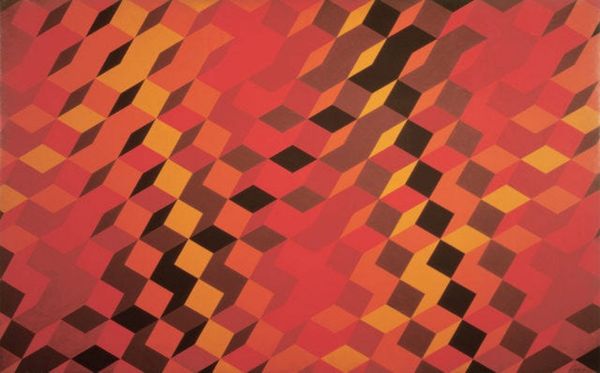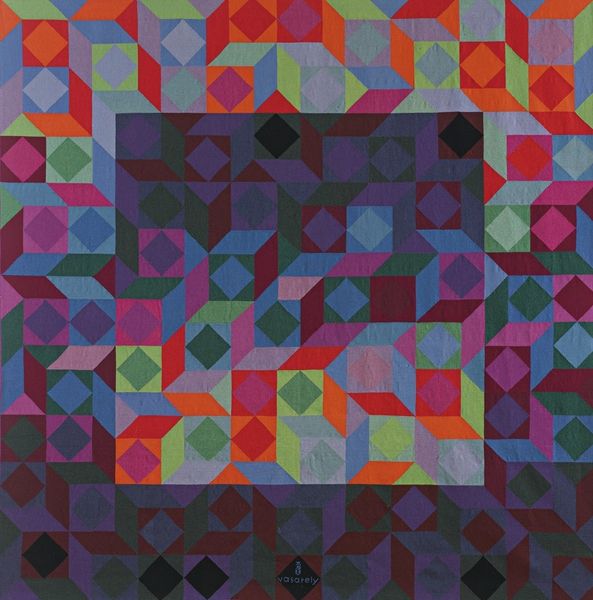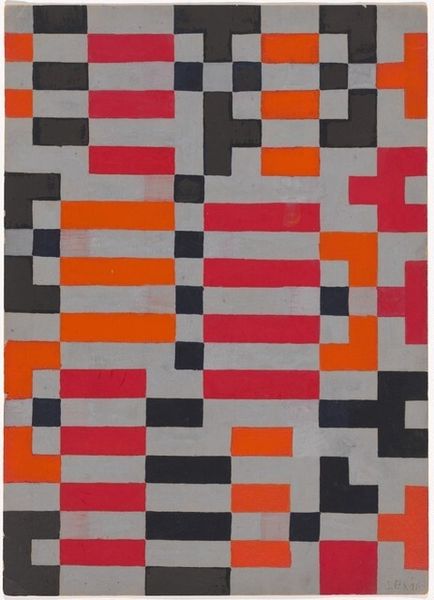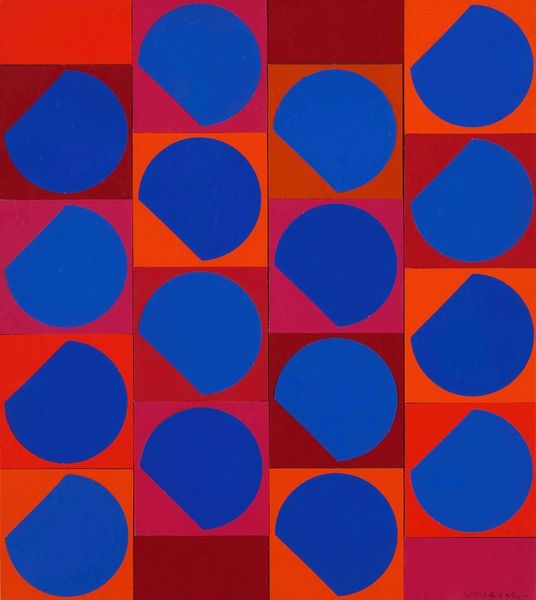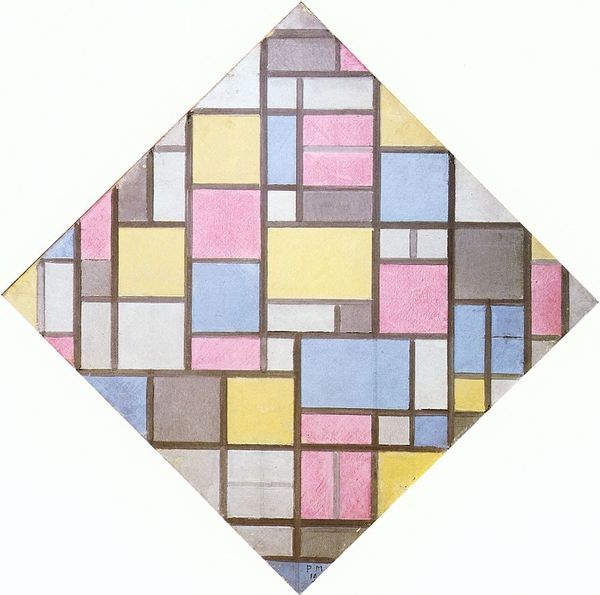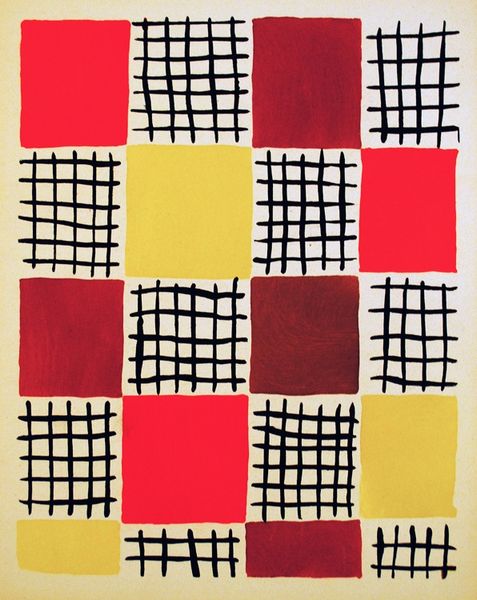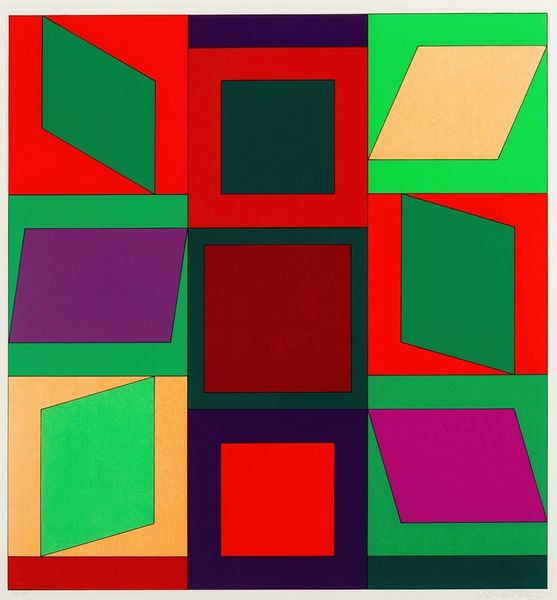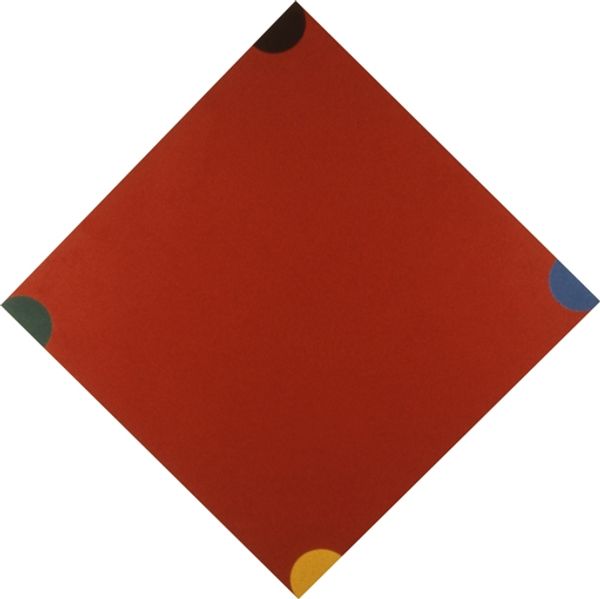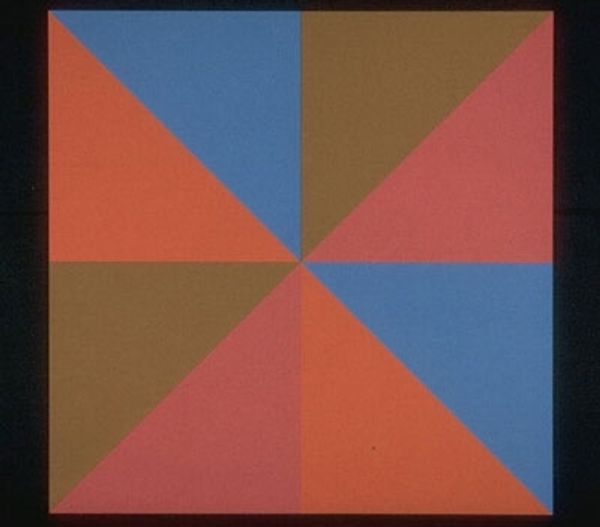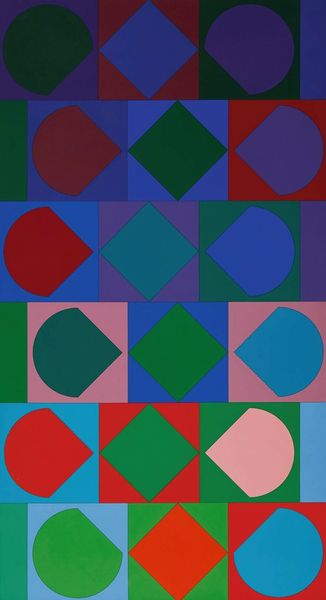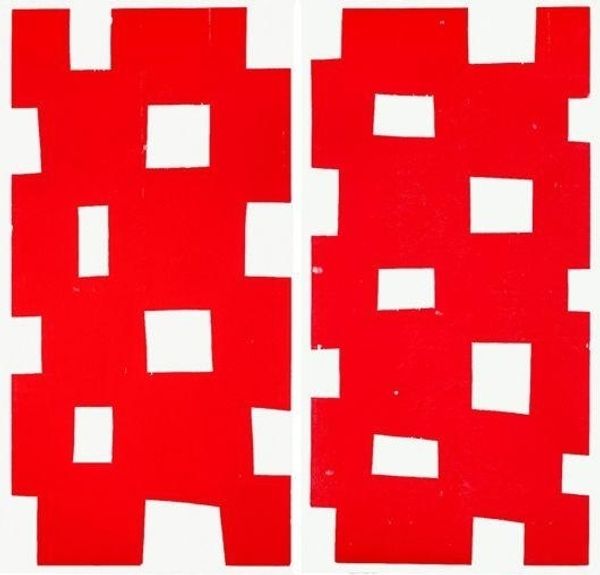
acrylic-paint
#
op-art
#
op art
#
acrylic-paint
#
geometric
#
modernism
#
hard-edge-painting
Copyright: Jeremy Moon,Fair Use
Editor: Here we have Jeremy Moon's "Crusader," painted in 1968 using acrylic. I'm struck by the boldness of the colors and the geometric pattern; it almost vibrates. How do you interpret this work? Curator: This painting demands we consider its socio-political moment. The late 60s were a time of upheaval and protest. Considering the title "Crusader," and the hard-edged geometry, how do you think Moon might be engaging with, or perhaps critiquing, established power structures and ideologies through abstraction? Editor: The title "Crusader" does make me think of something forceful, maybe even militaristic, and the sharp shapes add to that impression. Is it suggesting rigidity? Curator: Perhaps. We can look at the context of hard-edge painting, a reaction against the emotional intensity of Abstract Expressionism. In a way, it mirrors a desire for order and control, a prevalent theme of the time but seen through different ideological lenses. Do the colors offer any further insights to you? Editor: I notice the pink disrupts the rigid color scheme and breaks the red and orange pattern, adding visual complexity and preventing total conformity. Curator: Exactly. Color and geometric interruption become tools. This work invites us to question assumptions about order, power, and rebellion within both the art world and broader society. Consider also, who gets to be a 'crusader,' and for what causes? Editor: I hadn’t thought about the gendered connotations of “crusader” before. This gives me a new way to read its forms. Curator: Precisely. Analyzing art means digging deeper to connect aesthetics with social consciousness. I appreciate your insight and I leave this piece with an expanded view myself.
Comments
No comments
Be the first to comment and join the conversation on the ultimate creative platform.
